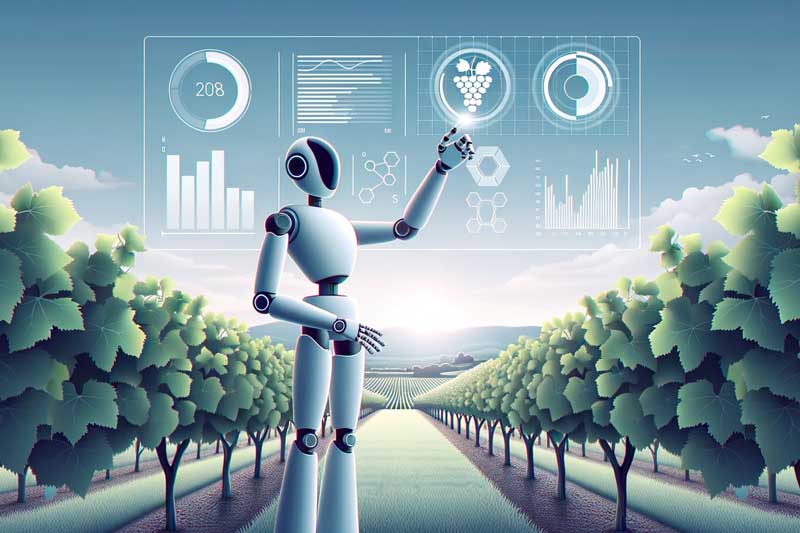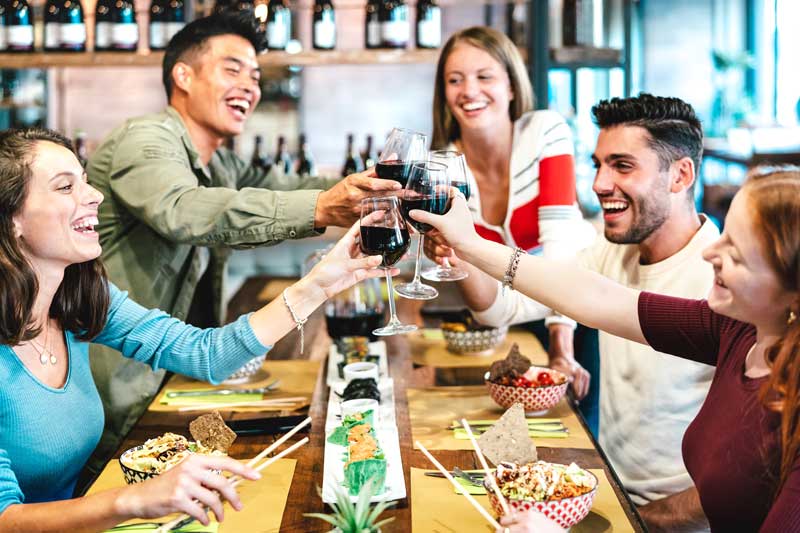The wine-making process has evolved significantly over the past couple thousand years. While traditional methods still play a crucial role, technological advancements such as AI are reshaping the industry.
Data-driven viticulture
With the integration of Internet of Things (IoT) sensors, vineyards can now monitor environmental factors within their grape cultivation. For instance, Bouchaine Vineyard in Napa Valley uses sensors from Cisco Systems to gather data on temperature, light intensity, and humidity to ensure that they’re growing their grapes under optimal conditions. This real-time information enables winemakers to make data-backed decisions to improve both grape quality and yield.
However, these sensors generate massive amounts of data, which can be overwhelming for human teams to navigate. AI can help process this data and provide actionable insights related to soil management, disease detection, pest control, and irrigation.
Moreover, robotics has also begun to find its footing in vineyard management. The introduction of robots such as the one used by Willamette Valley Vineyards to combat powdery mildew or TED by Château Clerc Milon for soil cultivation indicates a shift towards automated and precise agricultural practices.

AI in wine-making
As much as we may like to think it is, wine isn’t magic—its components can all be identified and measured, and the processes that created it replicated. And that means AI can also help, too.
Systems empowered by AI can examine the chemical and sensory attributes of wines, recommending ideal conditions and components to achieve a specific flavor profile. This leads to time savings and minimized waste, and provides winemakers the flexibility to explore novel mixtures and styles.
Post-production innovations
Beyond production, technological solutions are optimizing storage and distribution. Smart storage systems allow for better inventory management, reducing costs and ensuring optimal conditions for wine aging. Furthermore, electronic labels on bottles can provide comprehensive information about the wine’s origin, grape variety, and aging process, facilitating transparency and traceability.
After the wine is bottled and distributed, AI can analyze consumer taste preferences, enabling wineries to craft wines that align with those tastes or suggest wines that consumers are more inclined to purchase.
Customer engagement
Wine brands have begun to leverage AI-drive chatbots within their customer support in an effort to please their growing consumer base. Whether they’re curious about the tannins in a particular red or need to book a spot for an upcoming wine tasting event, AI bots can deliver response in real-time without waiting for a rep on the other end to respond. Plus, gathering feedback post-interactions offers a goldmine of data, allowing wineries to refine their offerings and streamline their processes.
Much like popular streaming or online shopping platforms, the wine industry is also using AI to craft personalized experiences. These chatbots, available round the clock, offer tasting notes, wine pairing suggestions, or histories of specific vintages. By analyzing a user’s preferences and ratings, these algorithms can even curate wine selections tailored to individual palates. And, for the skeptics out there, recent research underscores ChatGPT’s prowess: the AI has aced multiple sommelier exams.

Emerging AI startups in the wine-tech arena
The intersection of technology and wine has led to the emergence of startups focused on bringing innovative solutions to the industry. Companies like Alfred and Tastry offer inventory management and consumer preference prediction, respectively. Others, such as WineGrid and Deep Planet, focus on the production side, offering real-time monitoring solutions and satellite-based insights for grape cultivation. These startups signify the industry’s forward momentum, driven by technological integration.
In summary, the wine industry’s evolution, facilitated by technological advancements, reflects a commitment to quality, efficiency, and sustainability. As wineries continue to integrate these tools, they strike a balance between preserving age-old traditions and embracing the innovations of the 21st century.
- How Spirits Brands Can Improve Brand Loyalty with Data Analytics - January 30, 2024
- The Collapse of Herbl, and How Other Cannabis Distributors Can Avoid the Same Fate - January 24, 2024
- Top 5 Blog Posts of 2023 - December 28, 2023



